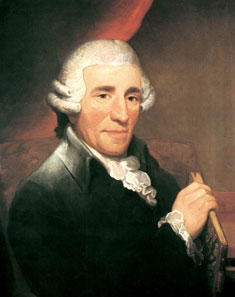
Violinist Mark Sokol passed away last week. He was a founding member of the Concord String Quartet. Between 1971 and its disbanding in 1987, the Concord String Quartet championed music by American composers including Charles Ives, George Crumb, Jacob Druckman and Morton Feldman. Mark Sokol later joined the faculty of the San Francisco Conservatory of Music.
Here is the Concord’s recording of Haydn’s String Quartet in C Major, Op. 76, No. 3. This quartet earned the nickname “The Emperor” because the second movement is made up of variations on the melody, “God Save Emperor Francis.” Today we know this theme as the German national anthem.
Haydn composed the theme after returning from England, where he heard “God Save the Queen.” The theme quickly gained popularity and inspired patriotism at a time when Napoleon was threatening the Austrian Empire.
Composer Samuel Adler offers a technical analysis of the second movement’s progression of variations:
This is a wonderful lesson in orchestration, for too often the extremes in the range are wasted too early in a work, and the final buildup is, as a result, anticlimactic. The other formal factor to notice is that the entire structure is an accumulation of the elements which have slowly entered the harmonic and contrapuntal scheme in the course of the variations and have become a natural part of the statement.
Here are the second, third and fourth movements.
[unordered_list style=”tick”]
[/unordered_list]


